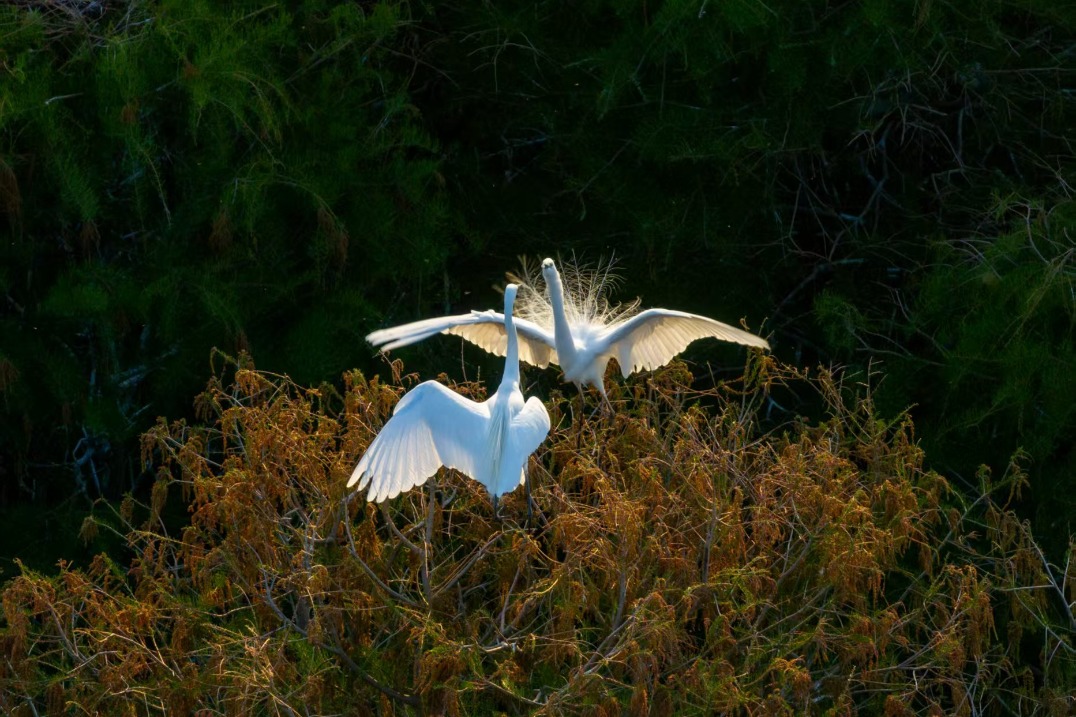Bird watchers flock to Beijing's Central Axis as hobby takes flight


For 26-year-old Wang Cui, the appeal transcends social media-worthy snapshots. "It's about learning species' names, decoding behaviors, and rebuilding our bond with nature," she says, challenging the stereotype that bird-watching is just for camera-toting retirees.
Beijing's remarkable avian diversity often goes unnoticed by outsiders. The capital is home to over 500 bird species — about a third of China's total — thanks to its position along a major migratory corridor and its rich mosaic of ecosystems, from gardens and lakes to wetlands and mountains.
Tiantan is not the only park along Beijing's Central Axis rich in birdlife. Spanning 7.8 kilometers, the axis weaves through a variety of habitats, from the woodlands of Tiantan and the wetlands of Shichahai to the reed beds of the Olympic Forest Park and the lakes and marshes of the Nanhaizi Park at its extended reaches. All offer ideal conditions for bird-watching.
In October 2023, Beijing unveiled five official birding routes. Among them, nine sites, including Tiantan and the Olympic Forest Park, were selected for a route highlighting bird-watching in urban parks and parks along the city's Central Axis.
"Birds are the ultimate environmental auditors," remarks Zhao Xinru. Near the Drum Tower, an ancient landmark on the Central Axis, she has seen large-billed crows, spotted doves, and kestrels. Even more impressively, she documented 307 bird species in the Olympic Forest Park, including gray herons and water rails. According to data submitted by the public, 326 bird species had been recorded in the park by 2023.
This rich biodiversity reflects effective policy measures. Beijing's 14th Five-Year Plan (2021-25) places a strong focus on preserving habitats for flagship species like the Beijing Swift, with a goal of establishing 100 conservation zones by 2025. Wetland restoration projects at Miyun Reservoir and the installation of "insect hotels" across the city further support this ecological vision.
While today's birding hot spots offer a vivid glimpse into Beijing's rich ecology, the city's ambitions soar far beyond the present, aiming to make urban biodiversity a lasting cornerstone of its future. By 2035, Beijing plans to create at least 30 birding hubs and 300 watch points, while establishing a comprehensive, diverse, functionally sound and distinctive avian research and public education system.
Public participation is also a vital part of this vision. From April 14 to 20, Beijing marked its 43rd annual bird-loving week, a citywide campaign promoting public awareness through bird-themed walks, lectures and livestreaming events.
Beijing's bird-watching boom mirrors a broader national shift. In 2023, China rolled out a national biodiversity conservation strategy and action plan, incorporating biodiversity into top-level policy. Central to this transformation are the development of a national park system, strict ecological red-lines, and large-scale restoration of wetlands and forests.
As more young people take to city parks with binoculars in hand, the bird-watching boom along Beijing's Central Axis reflects not just a growing fascination with nature, but also the steady improvement of the urban environment. More broadly, it signals a rising public embrace of ecological values.
"I hope more people will care about birds, develop a respectful attitude toward bird-watching, and adopt responsible practices," says Chen Jiaqi, a post-90s birding enthusiast with over a decade of field experience. "Only then can humans and nature truly coexist in harmony."


































